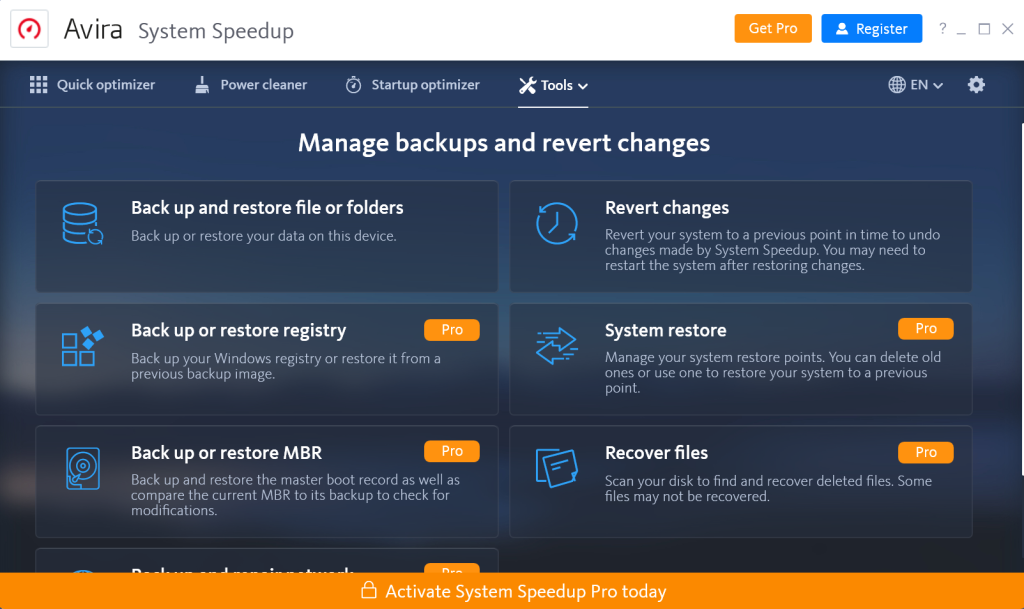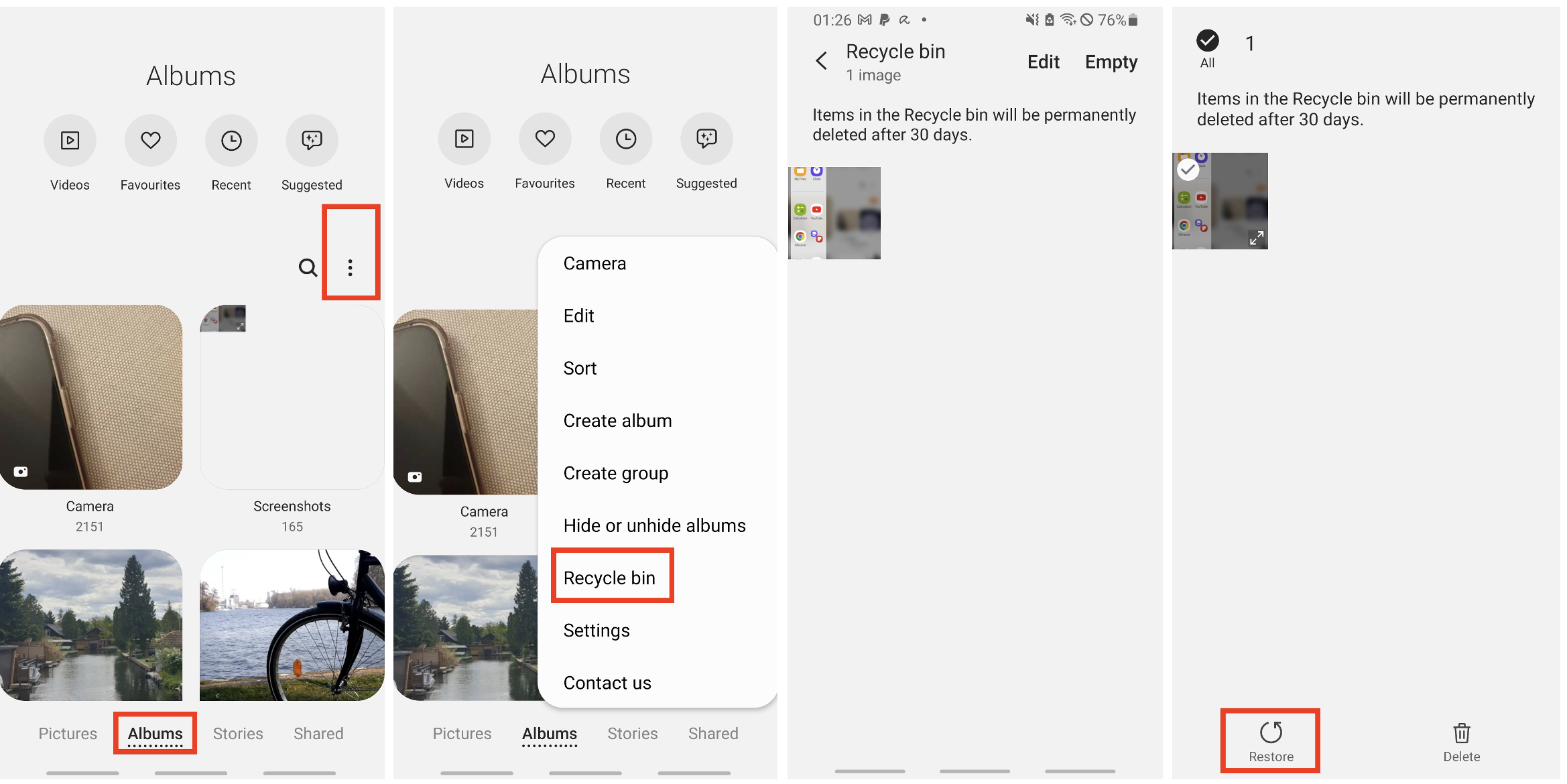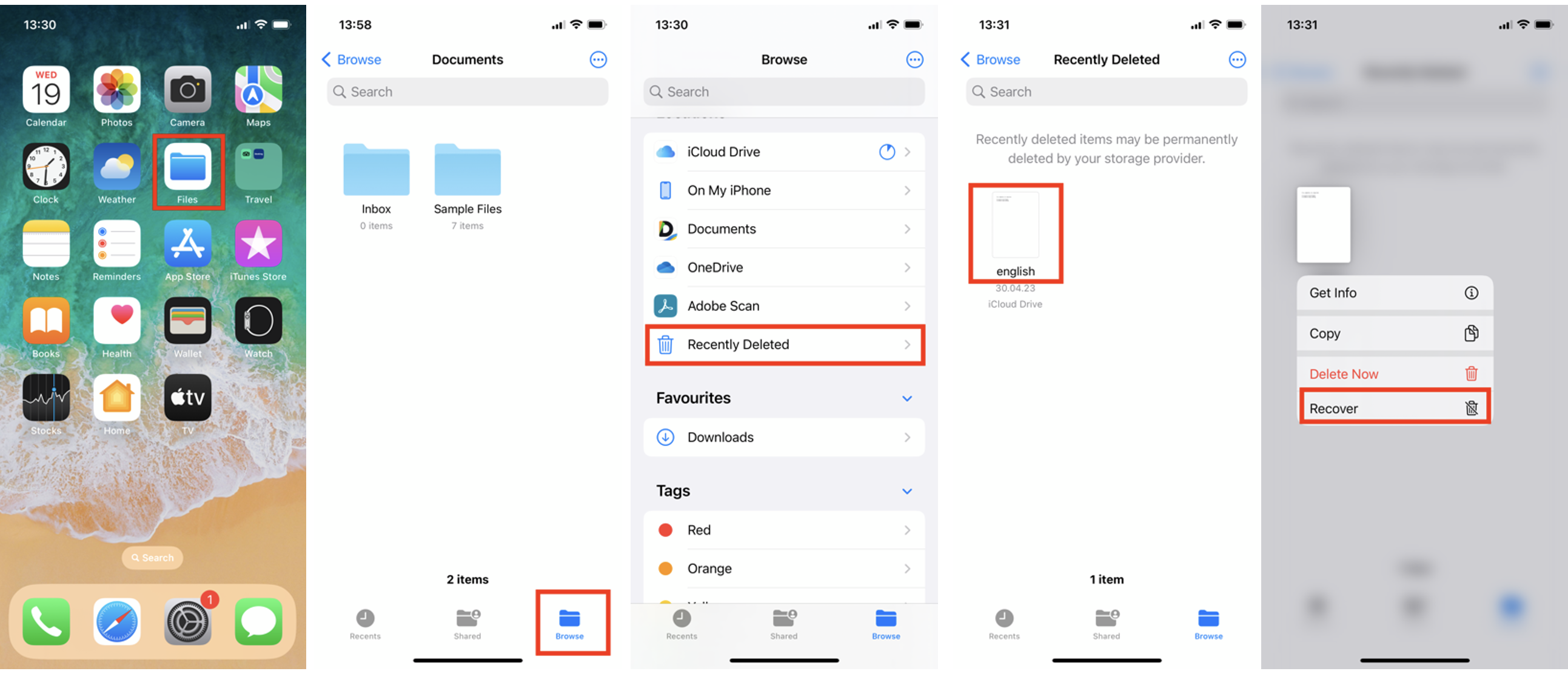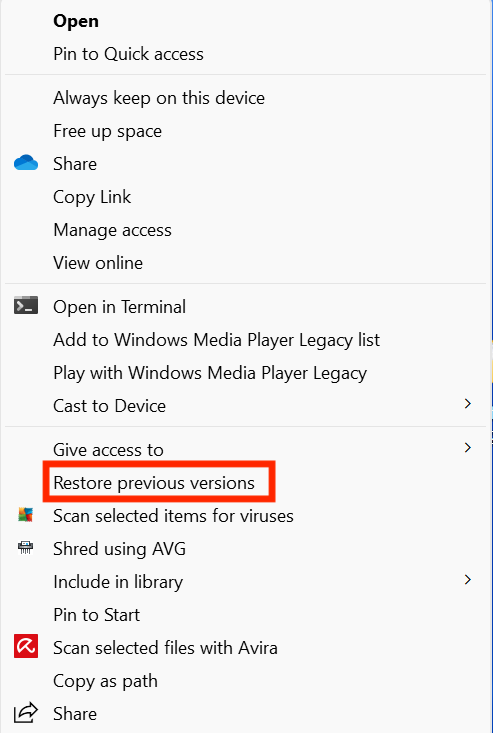We’ve all been there at some stage. You’ve spent ages working on an important file only to go and delete it by accident. You can’t even find it in the recycle bin or trash. Fortunately, there are a few ways to recover deleted files on all major operating systems like Windows, macOS, iOS, or Android. Read on to learn how to avoid losing files in the first place and how to recover them if they go missing — and how Avira Free Security for Windows can help you.
Where do deleted files end up?
If you delete files or even an entire folder on your Windows PC or laptop, they’ll be moved to the Recycle Bin. In principle, it’s nothing more than an additional file folder in which the deleted files are stored temporarily. Simply go to the Recycle Bin and you can restore your files with their original names and without losing any data.
The files you move there are only deleted permanently if you choose to empty the Recycle Bin. But is the data really deleted once you click Empty Recycle Bin?
Although the simple answer to this question is “yes”, your data is not necessarily lost forever. Recovering it, though, may require more effort. To explain where your files end up once they’ve been deleted, let’s delve in to the world of IT a bit.
Logical versus physical file deletion
When you delete files from a file system, their entries are removed from the file directory and the operating system recognizes the memory space that these files used to occupy as “rewritable”.
In the IT world, this form of deletion is referred to as “logical deletion”. The data itself is still on the disk; the memory space freed up through its deletion is only overwritten when it’s needed to store other data. Until then, these files can sometimes be restored using special programs.
In the case of “physical deletion” (also referred to as “secure deletion”), however, the deleted data can no longer be restored — or is something that can only be achieved at immense cost and with considerable technical effort. That’s because the memory space used by former files that was marked as “free” with logical deletion is usually overwritten several times.
In other words, the more you use your laptop, PC, smartphone, or tablet after deleting data, the greater the chance that the data will be permanently overwritten and lost forever.
Avoid data loss with regular backups
To avoid ending up getting to this point where your important files are lost forever, it’s best to back up your data regularly. You can only protect yourself against possible data loss if you make regular backups on an external hard drive or in the cloud. To do that, you can use special backup software or your operating system’s built-in programs.
For Macs, Apple’s own data backup app Time Machine is best — for Windows PCs, you can use the built-in backup and restoration tools. Alternatively, you can use a cloud solution such as Microsoft OneDrive or Apple’s iCloud Drive to back up your data.
Check out our blog on how to back up your iPhone for further info. For Android devices, we recommend OneDrive, Google Drive, or your device’s manufacturer-specific backup solution. Alternatively, use a USB cable or Bluetooth to transfer your smartphone files to your computer and back them up there.
A comprehensive cybersecurity solution like Avira Free Security includes not only data backup features but also many other helpful optimization tools, plus a whole bunch more. This way, you can back up important files and folders, and easily restore them when you want — plus also clean and speed up your PC.
Top tip: The advanced PC optimization solution Avira System Speedup Pro for Windows also includes numerous additional data backup and recovery features. You might even be able to use them to recover deleted files that weren’t backed up, might have been overwritten, or emptied from the Recycle Bin. The additional features are also included in the all-in-one solution Avira-Prime for Windows.

Recover deleted files on Android
Recovering deleted data on your Android smartphone or tablet is no easy task — especially since Android updates differ so much. On top of this, Android devices only have a trash folder for apps like Gallery, Photos, or My Files — not one for the system as a whole.
So if you accidentally delete pictures or videos from the Gallery or Photos app, they first end up in the app’s trash folder and are deleted automatically after 30 days. The same goes for the apps for personal files and emails.
That said, at least it’s easy to recover images or videos that end up in the Gallery trash folder, for example, within this 30-day period. Here’s how (in our example we use a Samsung Galaxy S20 5G running Android 12):
- First tap the Gallery icon, then tap the three vertical bars at the bottom of the screen.
- Select Trash from the menu and you’ll then see all the files that are pending deletion.
- Now when you tap Edit, you can choose which files you don’t want deleted.
- Simply tap the image(s) you want to keep, then tap Restore.

If you use the Photos instead of the Gallery app, follow these steps:
- Open the Photos app on your Android device.
- Tap the three vertical bars at the top left of the screen, then tap Trash.
- Keep your finger pressed on the photo or video you want to restore.
- Now tap Restore to restore the photo or video to the Photos app and to its previous storage location.
No matter if you use the Gallery or Photos app on your Android device, remember that if it’s been 30 days since you deleted your files, the only option left for you is to try and restore your data using what’s known as a recovery app. Although quite a few are available such as Recoverit or Dr.Fone, don’t expect these apps to work wonders either.
Recover data with root access
Even if you can recover data on Android devices, it’s only possible with what’s known as root access — which in tech terms means having extended access or admin rights with which you can penetrate deeper into the system. You can also get a couple of apps to give you root access to your smartphone.
However, we strongly advise against going down this route in your attempt to recover data, as attractive as it may seem. That’s because there’s a significant risk that you’ll accidentally damage important system components and that you may end up breaking your smartphone all together. You will of course also void the manufacturer’s warranty.
If you install a recovery app, however, it gains root access temporarily — so it can, so to speak, penetrate deeper into the Android operating system on your behalf and with any luck actually rescue deleted files — but it will un-root itself after restoring the data, ending the app’s extended access to your system.
That said, this process is also risky. You may find that the recovery app doesn’t end root access after restoring your data, which could potentially damage important components of the Android operating system at a moment of carelessness.
Restore data from an SD card
You can maximize data recovery success if you use an SD card and haven’t formatted it as “internal storage”. Since many SD cards are configured to create backups automatically, there’s a chance that your lost data can still be found there. Here’s how:
- First, open the Settings app on your device, then tap Accounts and backup.
- Now tap External storage, followed by Storage card.
- Select a backup copy and select the desired data type, such as photos.
- Tap Restore.
Recover deleted files on iOS
Recovering data on your iPhone or iPad sometimes seems a bit easier compared to Android phones or tablets. That’s because unlike Android devices, there’s a recycle bin on your iPhone or iPad where you can find and restore deleted files that can’t be found in the particular apps themselves.
Restore deleted files from the Recently Deleted folder on iOS
Many iPhone users don’t even know where to find the Recently Deleted folder containing their lost files when they accidentally delete them on their iPhone or iPad.
Here’s how to recover deleted files from your iPhone or iPad’s Recently Deleted folder (in our example we use an iPhone XR running iOS 15.3.1):
- Tap the Files icon to open the app.
- Now tap Browse on the bottom right.
- Tap Recently Deleted to view your deleted files.
- Tap and hold on the desired file until the context menu opens.
- Tap Restore to restore the file back to its original storage location.

Restore deleted data from iCloud
It’s a little easier to recover files on your iPhone or iPad if you use iCloud to store your data. However, you’ll need to keep a backup of your files in iCloud, otherwise it becomes a bit more difficult to recover deleted iPhone or iPad files.
As long as it hasn’t been 30 days since you deleted the files you need to restore, follow these steps to recover your data:
- Open iCloud on your Mac or PC and enter your Apple user credentials.
- Once you’ve logged in, click your name on the top left followed by Account Settings. Then, scroll to the bottom to the Advanced
- Click Restore Files to restore all or only selected files.
- Once you’ve chosen the file(s) you want to restore, confirm your selection by clicking Restore.
You’ll now find the files in the folders they were in prior to their deletion.
Restore deleted files without an iCloud backup
In its response to iPhone users’ questions, Apple Support itself says that it’s basically not possible to restore data without iCloud. This means that if you don’t have a backup of your iPhone or iPad files in iCloud, you can only restore your data with a bit of luck using special data recovery apps.
Recover deleted files on Windows
If you’re using a Windows laptop or PC, there are a few options open to you to recover deleted files — as long as you’ve also backed up your data.
Restore deleted files from the recycle bin on Windows
Let’s start with the first and simplest step: Recovering files from the Recycle Bin:
- Right-click the Recycle Bin icon on your desktop, then select Open from the menu.
- By right-clicking a file or folder, you can recover it by clicking Restore. Once done, the files or folders will be saved in their original location.
Rescue deleted data using Windows’ System Restore feature
Windows has an automatic backup feature: System Restore.
If you have System Restore turned on, this backup feature can help you recover data that’s no longer in the Recycle Bin. Plus, you can even restore your computer — and theoretically all file folders and directories — to a previous state, known as a restore point. After turning on this backup feature, the operating system regularly creates such restore points so you can restore your computer or individual folders to a previous state.
This built-in operating system feature can also be of great help such as if a program isn’t running well.
Here’s how to use Windows 10’s System Restore feature to get back your files — provided you’ve turned on the automatic back up feature on your PC:
- Click the Windows icon on the bottom left of your screen.
- Simply type Control Panel on your keyboard, then hit the Enter key.
- Click System and Security (if you can’t see this option listed, make sure your view is set to Category) and select System.

- Click System protection, select the System Protection tab, and then click System Restore.

- Select the restore point (which you believe contains the deleted data), click Next, and then Finish to restore your Windows device to this previous state.

If you can’t click the System Restore button, you’ll need to turn it on by following these steps (Windows 10):
- As mentioned above, open Control Panel, go to System and Security, and then select System.
- Click System protection, select the System Protection tab, and then click Configure.

You can often rescue deleted files by turning on System Restore. - Select Turn on system protection, click Apply, then click OK.
- Under Disk Space Usage, adjust the slider to configure how much disk space you want to use for system protection. We recommend at least 5-10 percent.
- Confirm by clicking Apply then OK.
Now that we’ve covered the steps to enable you to proceed with recovering data, we come to the actual data recovery stage.
If you still remember the folder or directory in which the deleted file was located, in Explorer simply right-click the folder icon and select Restore previous versions. Unless too much time has passed since you accidentally deleted the folder’s contents, you should be able to get any deleted files back this way.

To sum up: There are many ways to recover your data, but they all rely on you backing it up in the first place
As such, we strongly urge you to back up your devices regularly. Doing so also means you won’t be as badly impacted in the event of a ransomware extortion attack or if your device goes missing or gets damaged — plus you reduce your risk of losing any data.
As an alternative to your operating system’s built-in backup solutions, we recommend Avira System Speedup Pro. That’s because — in addition to special data backup and recovery features — you can enjoy access to over 40 tuning tools to help you rev up your Windows device. Avira System Speedup Pro’s advanced optimization tools are also included in the all-in-one solution Avira Prime, which also offers you many other cutting-edge features to protect your data, devices, and online privacy.
If you’re on the hunt for a free solution to back up and restore your files, plus tuning tools, antivirus protection, a VPN, and other essential features, Avira Free Security is an excellent choice.














